E
S
I
G
N
Interview w/ Curtis Felton
“I don’t like people taking what the world gives them. You can declare your own definitions for anything.”
Black Helmut
Black Helmut vs. The World

Curtis Felton and Chase Young (aka Black Helmut)
Enamoured by his work, and only a little intimidated, I called up Curits Felton to ask about his desgin project, Black Helmut. Banking on a memory of an approachable, genuine, and hilarious dude, I was releived to find that he was just as excited about doing this, as I was. Years ago at a party, I commented on Curtis’s Takashi Murakami tattoo which, in a way, started our friendship. I recognized his acquaintance with art in the few pieces of his that hung on the walls of our mutual friend's room, where for the very first time, I was struck that someone like myself could make something, frame it, and have it look like that.
Since then, Curtis has realized a lifelong dream of his, a personal design project called Black Helmut, alongside friend and compatriot Chase Young, who is an equally anomalous and prodigious artist as Curtis himself.
The Black Helmut pieces shocked me at once. They are heavy, utilitarian, and refuse to pair with anything else in the room but themselves. They are absurd, aberrant, and deviate from anything you thought you liked. They also look really, really good.
The antithesis to your mid-century modern, eternally trending room, the rejection of all things contemporary, the highly personal, and completely mundane. The highly functional, and deceptively attractive . . .
This is Curtis and Chase.
This is Black Helmut.
Intro by Brandon A. Parks
Photos by Black Helmut
Photos by Black Helmut

When did you first become interested in art, design, and making things?
I grew up in a creatively dry home. My grandfather’s on both sides influenced me the most, as far as my making things goes. But there wasn’t a creative influence in my life really, there still isn’t.
I never took an art class once, never, all the way through high school. I never pursued it, it was never a thing. I was unaware. But at some point I decided to go to Kendall, which is an art and design school in Grand Rapids. I did that for three years, and then I bailed because I didn't know if it was my dream to make stuff or if it was my parents. That was a tipping point for me.
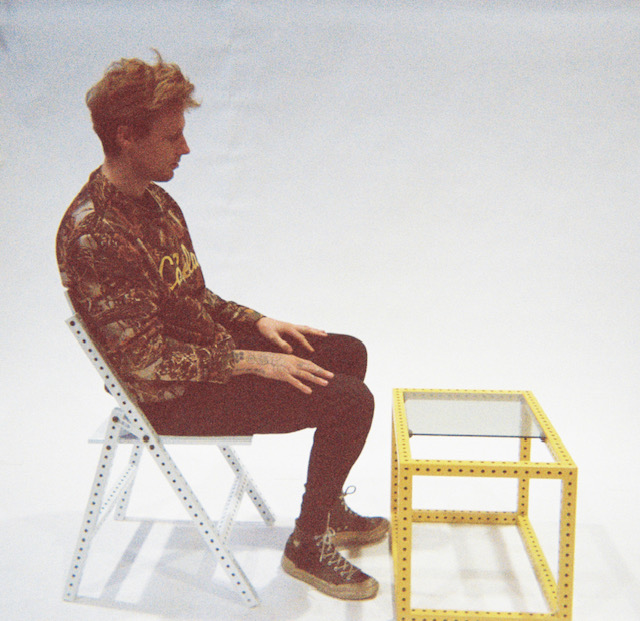
I think when it really started was when I went there and took art history classes. My mind was blown away with art history. I am still obsessed with it. It was an awakening for me to see other people who felt the need to get their creative energy out, and I connected with that very strongly. I never had friends like that. That was when I started to draw and doodle. For design, I connected really hard with Duschamp and his appropriation work, and everything has kind of revolved around that. Seeing an object, but seeing it in an unlimited amount of ways, that is the type of perspective that really interests me.

“Seeing an object, but seeing it in an unlimited amount of ways, that is the type of perspective that really interests me.”
What experiences led you to where you are today?
I’m such a stubborn person, like any classic entrepreneur probably. When I was in college they had three professionals that came in for a Q and A. I was in the furniture design program. At the very end, the professor asked the professionals what three things were that we should take away when we leave here and get a job. All three of them said, “Draw, draw, draw, draw, draw, draw.” That pissed me off so much. I hated drawing. I had no desire to be doing any of that. It is funny how now it has come full circle. I love it, and it’s the only thing that matters.

I realized it wasn’t about how good you are, that that doesn’t determine how well you can make stuff. It was about doing it everyday. After a while, certain ideas will pop up again. For example, I kept drawing chairs. I didn’t want it to look too much like Donald Judd, but I didn't exactly know what I was looking for either. I was bouncing around ideas, and this was the third time I sketched this certain design unintentionally, accidentally. I thought, Oh that means something. My unconscious is telling me that I like this design.
The practice of keeping a routine allows for certain intuition or surprises to happen.
For sure.

What are other outlets for you to be creative, what have you been jamming too lately?
I am extremely binary right now. I listen to classical music and house music. There is nothing else. It’s been that way for a while. I’ve fallen away from lyrics. Occasionally, I’ll listen to rap. But in the shop I pretty much listen to classical and house.
“Why don’t I allow myself to be creative in all areas of my life?”

Going through all this, learning about artists, experiencing artists, just being around other people that are creative, it’s led me to realize. . . I thought that when artists were creative they were creative in one way. But there was a moment that I realized that I wasn’t only creative with just this; in working in steel, or t-shirt design, that was me limiting myself. Why don’t I allow myself to be creative in all areas of my life? Or at least try to. Try to dabble in guitar, try to learn cooking more. It’s been a completely different experience living for me with realization to stop being afraid of things, and to have a creative confidence in anything that I do. It’s the most interesting life ever, I hope everyone moves through life in that way.


What are important qualities to you in art and design? What are things you look for, what are things you don’t like?
I feel like the answer to that question is the light that you see far away. It’s just enough to make you know where to run towards, but it’s not clear enough to know what you’re after. I know some basic things. I hate admitting that Donald Judd is a big influence, because I think he’s the shittiest person ever, as most artists are at that level. I’m influenced by Bauhaus, not necessarily in the design, but more in the philosophy. To use mass produced things and not change them too much, but just enough that it becomes functional, like plywood.
“If I’m ever designing furniture, I have one thing in mind, which is to allow the person to develop a relationship with the object.”
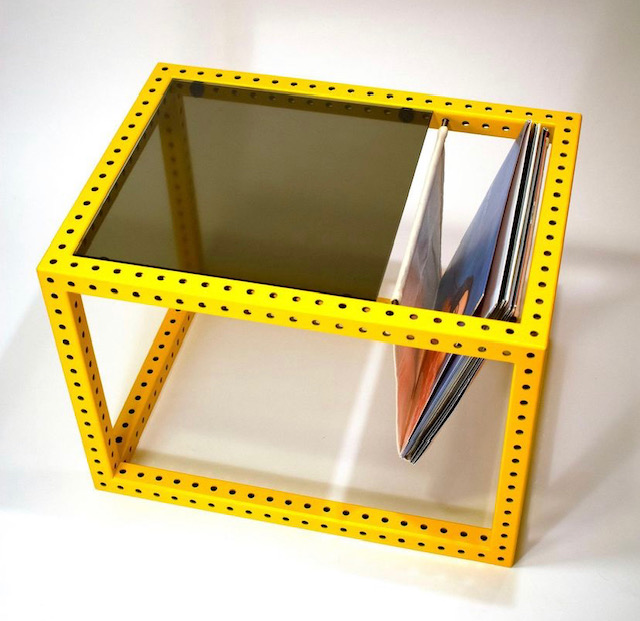
I like high functionality. If I’m ever designing furniture, I have one thing in mind, which is to allow the person to develop a relationship with the object. If the person can have a relationship with it, it means something to you, and it’s going to create more joy, and have more purpose. Appropriation is at my core. That is what drew me to the telespar. Anything can be anything, and I like living in that philosophy. I don’t like people taking what the world gives them. You can declare your own definition for anything.

What are things you don’t like?
I’m such a color person. I love clean lines, and very bold, powerful, redundant designs. I don’t like when things are realistic, when paintings take thousands of hours. I don’t care about them at all. Even a lot of abstract stuff, even if it looks cool in your modern industrial Brooklyn flat. Of course, I want stuff to be aesthetically pleasing, but I don't want it to be why you like it, or what it was created for. I really like Edward Hopper, it’s flat and boring, but with really clean planes of color. I really love “office in small city,” I’m immediately drawn in and wondering what the man is thinking. I’m drawn to stuff like that. I really love Ellsworth Kelly, and Jasper Johns - those boys really changed the game.

“Of course, I want stuff to be aesthetically pleasing, but I don't want it to be why you like it, or what it was created for.”
Oh, and I hate mid-century. That’s a bold thing to say, maybe a little too bold. But I think half of that is because it is eternally trending, and half of that is because I don’t want this spindell walnut leg. Can we give it a rest?!!! I want something more heavy and obvious.
I’m looking at my spindell walnut bed frame.
I have to say that’s cool, but not my favorite.

Where did the initial idea come from? Have you always wanted to start your own design project?
100%. I’ve been wanting this since 2016. I’ve always wanted it. It was more that I didn't know how to get there. Even in high school, I didn’t know how to make stuff. I didn’t know how a table was made. But I started formulating ideas, different materials to use, going over my sketchbook, but at a certain point, when you’re trying to start something, it isn’t about how to do it, but which one to choose? For me there were so many ideas flushed out; the brand name, the designs, all these directions to take. I’m confident with them all, any of these will work, let's flip a coin, and go for it.

That was pretty much where I was at. There was another idea, called Gun Yellow. I really love colors and brand names. I think that's the coolest thing, and maybe if it was reversible. I wanted to take these sofas I made, very brutalist, steel, corten, maybe even some wood. I would take them out to the desert with pleather cushions on them, and burn them, take a wrecking ball to them, blast them with guns, absolutely mutilate them. But they’re still fine because they’re steel and strong, and then I would sell those. You buy a distressed guitar and everyone loves it, why can’t you do that to a sofa?
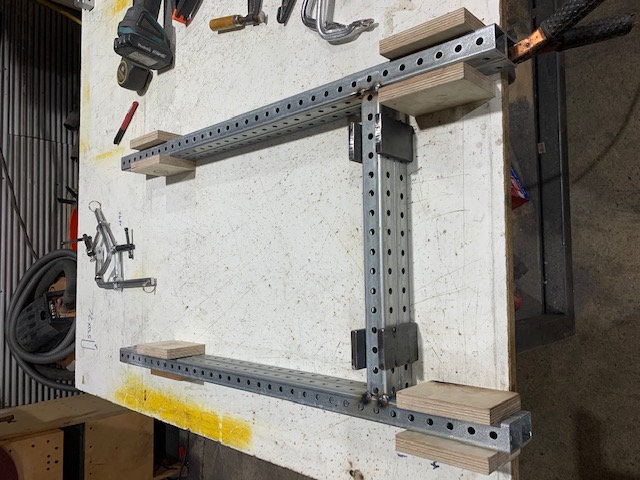
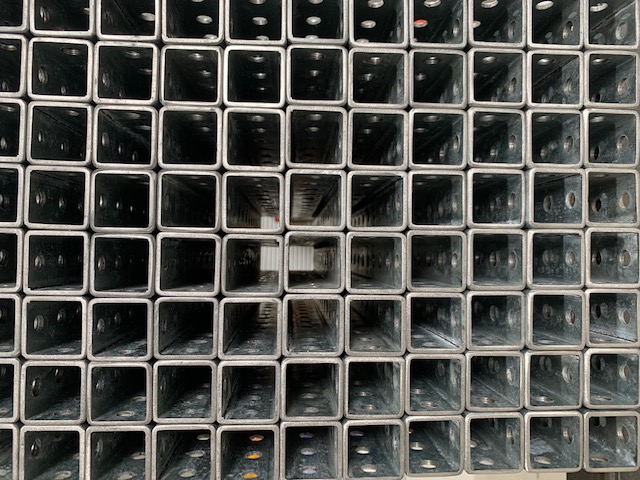
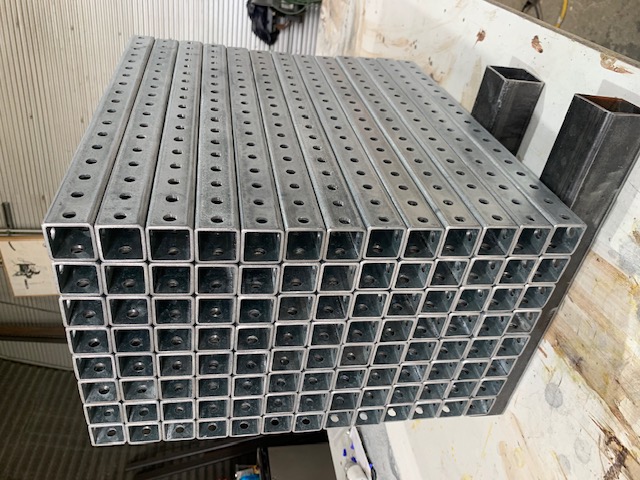

I grew up working with telespar with my grandfather, that’s where I got the idea to use it. He was a salesman for them for 30 years. I was right, but I didn't know the whole story. I was trying to find what’s different, what was also me? I didn’t want to try too hard, I wanted something that was very honest to myself. I experimented and made a couple tables, and I started to get more confident with it. I decided to call my grandmother and investigate a little more backstory to see if I was missing anything. I wanted to get my story straight about why I chose telespar. I called her and she said, “No. You’re right, but you’re totally wrong. Your grandpa invented it. He created the whole thing.” What? Why hadn’t I known about this? It is everywhere. That pushed me over the edge. It’s hard to say that to people without them being like “Oh, sure”. I was going to use it either way, but now it’s way more appropriate.

“‘Your grandpa invented it.’”
That was really cool. I was visiting some friends here in Detroit last summer thinking that I might move here. When I was here, I drew something that sparked the idea for the name. When I was in high school I would use a black motorcycle helmet as my ppe (personal protective equipment), which was odd, but I felt, cool thing to do. And with my brothers, we played with Legos all the time and the black helmet’s were always the coolest thing. It sounds cool. I remember texting Chase, he’s the most creative person I’ve ever met, and I said, “You’re helping me with this. It’s called Black Helmut. This is what we’re doing. This is what the furniture is. Are you in or out?” And he was like hell yeah. And that was early July of last year.

What’s Chase’s role in Black Helmut?
It’s pretty 50/50. At some point we would like to live near each other, but it’s not necessary right now. He does all the website, customer service, and social media. He’s the voice and personality behind the brand. He does help with designs here and there. He’s also a God with shipping and fulfillment, which sucks because I have to do that, but he guides me through it. He does all the back of house, with labels, with finding the cheapest way to ship items. I’m just designing mostly. I make everything, and we both will make content on our own accord, and network where we can.

No detail goes unnoticed in Black Helmut, the instructions included with the pieces, the layout of the posts, and the captions. Humor plays a key role in Black Helmut, why is humor so important to you guys?
Humor is huge! From the beginning Chase and I had a tone of voice that just came natural to us. So when creating copy for the products we made it a priority to allow our true selves to be seen and heard in the brand. We actually have had the privilege of teaming up with Gunner Animation here in Detroit to help come up with a mini website that explains the directions for the mini in a very BH meets 1000 gec’s kinda way. Very stoked on this.
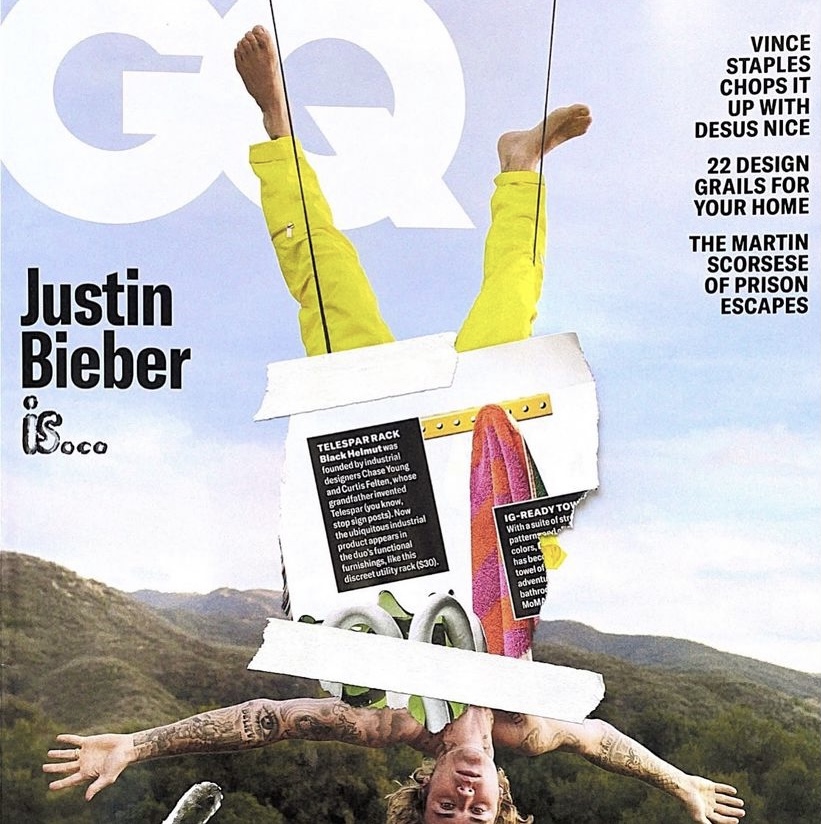
The conversation has always been that though - make a quality product, be professional, know that your product is great, but treat those things as redundant. Joke about them. You already know you’re getting something good, and you want it so let's have fun with it. Being cheeky, being edgy, we wanted this dialogue that is unique and personable. It creates this sort of inside joke. You get Black Helmut’s humor, and it makes you feel a part of the club. That is something we’re trying to tap into more and more.
“You get Black Helmut’s humor, and it makes you feel a part of the club.”

I’m so glad I’m doing it with Chase. You second guess everything as an artist. So to have that other person’s opinion who is like no or yes, it calms you down, which is nice.

What does it feel like to see your work out there in people’s houses and spaces?
That is something I want to get better at. I want to reach out and ask our customers their opinions on stuff so we can learn better about what they want, or what could be more functional, etc. Early on, we felt it was too abstract. We have to relax. We have to showcase it in more of a normal setting. We have to help out all these people who wouldn’t know how it would look in their home. I still think that’s true, but it’s also not. People are buying it confidently, and they put it in there, and I see a photo of the Yellow Homie and I’m like oh, it looks pretty sick actually. I’m also kind of learning how it looks.

I hope it’s a conversation starter, not in a brag way, but I hope it starts a conversation about people wanting more functionality out of their space, less clutter, etc, etc…
What are some of the challenges you’ve had to face with Black Helmut, or with your professional work thus far?
It’s been the weirdest game to be in. An internal hurdle is the telespar. It’s really sick, but I don’t want to be so one sided with it. It’s a starting point. Practically, powder coating is literally the bane of Black Helmut’s existence. It is such a nightmare to find people who can do quality work. Margins, minimums, that’s been the hardest one. Also, engineering things. I can’t be in the shop as much as I have been, it’s taking up so much time, but we don’t want to hire someone to make stuff because we’re not at that period yet. Trying to find people and services elsewhere, international or here to fill those needs, I feel like it’s never going to end. But I’m hopeful we can find some more concrete relationships.

It surprises me that the prices are as low as they are. The Yellow Homie is $399. That doesn’t seem that expensive for a handmade, designed piece. Whereas some other similar pieces are upwards of $900.
There are two worlds in fine art and furniture. There is the limited runs of let say 1-50 that should be sold for thousands, because the people throwing fat coin are gonna want exclusivity, and then the HAY’s and Black Helmuts of the world who make “unlimited” amounts which attract a different audience.
That doesn’t mean BH won’t have some ultra one-off pieces coming soon. We are just more focused on exposure at the moment and solidifying our place in the market.
“To open up our portfolio to a lot of different things, and to keep progressing the functionality of our work, is what we are here for.”

What do you envision for the future, what would be a dream project?
Easily the most fun we’ve had, just existing, has been collaborating with artists. We have a cool collaboration coming up with Benjamin Edgar. Working with other creative people is a lot of fun. To open up our portfolio to a lot of different things, and to keep progressing the functionality of our work, is what we are here for.
I really like how Deus Ex Machina has this lore about them with one place in Bali and one place in Venice. It would be sick to have a Black Helmut location in London, and one in Detroit. Just two though. Not like a gallery vibe, not what you’d expect. Something along the lines of Meow Wolf, but more architectural, not surreal. That would be a lot of fun.
Chase moves to London and will be there for two years. He’s getting his MFA. I’d love for that to translate into something. I’d love to abuse his residency.

What is some advice you’d give to aspiring designers, artists, people who want to build things?
There are two hard parts. Come up with the ideas, which we’re all coming up with as creatives, and then pick your idea. I don’t care how painful it is. You have to start doing it. Keep a close knit group of people you can trust to bounce ideas off of, and things start happening. That’s what happened with this. We started doing it, we knew there was nothing else that looked like it; it was very aggressive, and definitely not what is in. But now, people hit us up on Instagram, apparently GQ liked us. Things start happening. Start doing it and don’t stop. At least commit to a year or two. Half of that stuff is what I’ve been told, and the other is just doing it.
“Come up with the ideas, which we’re all coming up with as creatives, and then pick your idea. I don’t care how painful it is.”
Oh yeah, and draw, draw, draw.

Spend your money here ︎︎︎
https://blackhelmut.com/
Spend your time here ︎︎︎
https://www.instagram.com/blackhelmut/
https://blackhelmut.com/
Spend your time here ︎︎︎
https://www.instagram.com/blackhelmut/